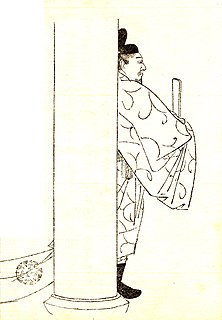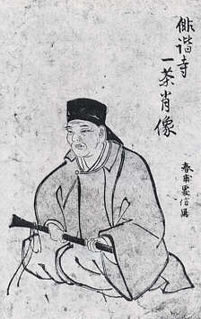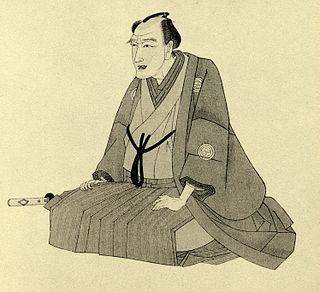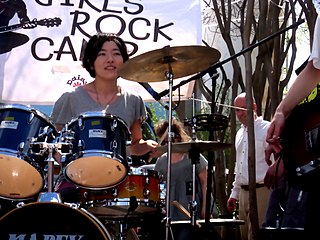 W
WThe Thirty-Six Immortals of Poetry are a group of Japanese poets of the Asuka, Nara, and Heian periods selected by Fujiwara no Kintō as exemplars of Japanese poetic ability. The oldest surviving collection of the 36 poets' works is Nishi Honganji Sanju-rokunin Kashu of 1113. Similar groups of Japanese poets include the Kamakura period Nyōbō Sanjūrokkasen (女房三十六歌仙), composed by court ladies exclusively, and the Chūko Sanjūrokkasen (中古三十六歌仙), or Thirty-Six Heian-era Immortals of Poetry, selected by Fujiwara no Norikane (1107–1165). This list superseded an older group called the Six Immortals of Poetry.
 W
WThe Attendant to Empress Kōka was a waka poet and Japanese noblewoman active in the Heian period.
 W
WYōsuke Eguchi is a Japanese poet, actor, and singer. Since 1986, he has appeared in a number of television series and movies. He is married to the singer-songwriter Chisato Moritaka, with whom he has a son and a daughter.
 W
WFujiwara no Ietaka was an early Kamakura period Japanese waka poet. Several of his poems are included in the Shin Kokin Wakashū. He was related by marriage to Jakuren, which made him strongly connected to the network of poets of the time. He was a pupil to Fujiwara no Shunzei.
 W
WFujiwara no Kanesuke was a middle Heian waka poet and Japanese nobleman. He is designated as a member of the Thirty-six Poetry Immortals and one of his poems is included in the famous anthology Hyakunin Isshu. Kanesuke's poems are included in several imperial poetry anthologies, including Kokin Wakashū and Gosen Wakashū. A personal poetry collection known as the Kanesukeshū also remains.
 W
WFujiwara no Mototoshi was a waka poet and Japanese nobleman active in the Heian period. One of his poems is included in the Ogura Hyakunin Isshu. He served as Udaijin in the Heian administration.
 W
WFujiwara no Okikaze was an early 10th Century middle Heian waka poet and Japanese nobleman. Great-grandchild of Fujiwara no Hamanari. He is designated as a member of the Thirty-six Poetry Immortals. 38 of his poems are included in the anthologies compiled by the imperial order following Kokin Wakashū. One of his poems is included in the famous anthology Hyakunin Isshu.
 W
WFujiwara no Sadakata , also known as the Minister of the Right of Sanjō , was a Japanese poet and courtier. His father was Fujiwara no Takafuji, and the poet Fujiwara no Kanesuke was his cousin and son-in-law. His son Asatada was also a poet.
 W
WFujiwara no Tadahira was a Japanese statesman, courtier and politician during the Heian period. He is also known as Teishin-Kō (貞信公) or Ko-ichijō Dono (小一条殿) or Ko-ichijō daijō-daijin.
 W
WHanabusa Itchō was a Japanese painter, calligrapher, and haiku poet. He originally trained in the Kanō style, under Kanō Yasunobu, but ultimately rejected that style and became a literati (bunjin). He was also known as Hishikawa Waō and by a number of other art-names.
 W
WHarumichi no Tsuraki was a poet who lived in the mid-Heian period. His father was Harumichi no Niina, a descendant of the Mononobe clan.
 W
WHoshino Tenchi was the pen name a noted poet, educator, calligrapher, and martial arts master in Meiji period Japan. His true name was Hoshino Shinnosuke (星野慎之輔). Hoshino Tenchi was one of the founders of the Bungakukai literary magazine, which was highly influential in the development of modern Japanese literature and Japanese poetry.
 W
WHosokawa Fujitaka , also known as Hosokawa Yūsai , was a Japanese samurai daimyō of the Sengoku period. Fujitaka was a prominent retainer of the last Ashikaga shōguns. When he joined the Oda, Oda Nobunaga rewarded him with the fief of Tango. His son, Hosokawa Tadaoki, went on to become one of the Oda clan's senior generals.
 W
WNoriko Ibaragi was a Japanese poet, playwright, essayist, children's literature writer, and translator. She is most well known for her poem, Watashi ga ichiban kirei datta toki , written twelve years after the Japanese defeat in WWII. In 1953, she co-founded the literary journal Kai ("Oars"). She began to learn Korean as a second language at the age of fifty, going on to publish her own translations of poetry by her Korean contemporaries.
 W
WJien was a Japanese poet, historian, and Buddhist monk.
 W
WKambara Ariake was the pen-name of a Japanese poet and novelist active during the Taishō and Shōwa periods of Japan.
 W
WPrincess Kazu (Kazunomiya) was the wife of 14th shōgun Tokugawa Iemochi. She was renamed Lady Seikan'in-no-miya after she took the tonsure as a widow. She was the great-great-great aunt of Emperor Akihito, who reigned from 1989 to 2019.
 W
WKi no Tomonori was an early Heian waka poet of the court, a member of the sanjūrokkasen or Thirty-six Poetry Immortals. He was a compiler of the Kokin Wakashū, though he certainly did not see it to completion as the anthology includes a eulogy to him composed by Ki no Tsurayuki, his cousin and colleague in the compilation effort. Ki no Tomonori is the author of several poems in the Kokin Wakashū, and a few of his poems appear in later official collections. A collection of his poems from various sources appeared as the tomonori shū.
 W
WLady Kii of Princess Yūshi's Household , also known as Ichinomiya no Kii (一宮紀伊), was a waka poet and Japanese noblewoman active in the Heian period. She is traditionally enumerated as one of the Thirty-Six Female Immortals of Poetry . Her works were featured in several imperial poetry anthologies, including Shingoshūi Wakashū, Senzai Wakashū, Shokugosen Wakashū, Gyokuyō Wakashū, Shinsenzai Wakashū, Shinchokusen Wakashū, and others.
 W
WKisen (喜撰) was an early Heian period Buddhist monk and waka poet. Little is known about his life other than that he lived in Mount Uji.
 W
WKiyohara no Fukayabu Japanese poet of Heian period. He is an author of the thirty-sixth poem of the Ogura Hyakunin Isshu and contributor of 17 poems to the Kokin Wakashū.
 W
WKobayashi Issa was a Japanese poet and lay Buddhist priest of the Jōdo Shinshū sect known for his haiku poems and journals. He is better known as simply Issa (一茶), a pen name meaning Cup-of-tea. He is regarded as one of the four haiku masters in Japan, along with Bashō, Buson and Shiki — "the Great Four."
 W
WKodai no Kimi was a Japanese waka poet and noble from the middle Heian period. She is one of only five women numbered as one of the Thirty-six Poetry Immortals.
 W
WKyo is a Japanese musician, singer, lyricist and poet. He is best known as the vocalist and lyricist of the metal band Dir En Grey. He was formerly in a string of visual kei rock bands, with the most notable being La:Sadie's from 1995 to 1997. He then started Dir En Grey in February 1997, following La:Sadie's disbandment with three of its members, and formed the experimental rock band Sukekiyo in 2013. Kyo was inspired to become a musician when he saw a picture of Buck-Tick vocalist Atsushi Sakurai on the desk of a junior high school classmate. When he then discovered X Japan he was particularly fond of hide and had his parents buy him the guitarist's black signature model guitar. However, after realizing how difficult it was to play guitar and then bass, he then switched to vocals.
 W
WMibu no Tadami was a middle Heian period waka poet and Japanese nobleman. He is designated as a member of the Thirty-six Poetry Immortals. His father Mibu no Tadamine was also a distinguished poet.
 W
WMinamoto no Kanemasa was a waka poet and Japanese nobleman active in the Heian period. One of his poems is included in the Ogura Hyakunin Isshu. A member of the Minamoto clan, his work is also included in the Kin'yō Wakashū and the Shinsenzai Wakashū.
 W
WMinamoto no Muneyuki was an early Heian waka poet and nobleman. He is designated a member of the Thirty-six Poetry Immortals, and one of his poems is included in the famous anthology Hyakunin Isshu. His remaining works include a poetry collection known as the Muneyukishū (宗于集).
 W
WYukio Mishima , born Kimitake Hiraoka was a Japanese author, poet, playwright, actor, model, Shintoist, nationalist, and founder of the Tatenokai . Mishima is considered one of the most important Japanese authors of the 20th century. He was considered for the Nobel Prize in Literature in 1968, but the award went to his countryman and benefactor Yasunari Kawabata. His works include the novels Confessions of a Mask and The Temple of the Golden Pavilion as well as the autobiographical essay "Sun and Steel". Mishima's work is characterized by "its luxurious vocabulary and decadent metaphors, its fusion of traditional Japanese and modern Western literary styles, and its obsessive assertions of the unity of beauty, eroticism and death."
 W
WOno Otsū, also known as Ono no Ozū, was a Japanese noble lady, calligrapher, poet, painter and musician. She was a student of the arts in Kyoto, studying painting, calligraphy, music, chanting, and waka poetry. Her work was noticed by members of the Tokugawa shogunate, including Tokugawa Ieyasu and Tokugawa Hidetada, and she was often hired by them to teach members of their court. Because she was the author of works that impacted Japanese art during the Azuchi-Momoyama and Edo period, and served several prominent figures, Otsū was proclaimed one of the leading female calligraphers of premodern Japan.
 W
WSaishū Onoe (1876–1957) was a Japanese tanka poet and calligrapher.
 W
WŌshikōchi no Mitsune was an early Heian administrator and waka poet of the Japanese court (859–925), and a member of the Thirty-six Poetry Immortals. He was sent as the governor of Kai, Izumi and Awaji provinces, and on his return to Kyoto was asked to participate in the compilation of the Kokin Wakashū. He was a master of poetic matches and his poems to accompany pictures on folding screens were widely admired for their quality. His influence at the time was commensurate with Ki no Tsurayuki, and he has an unusually large number of poems (193) included in the official poetry collections.
 W
WŌtomo no Kuronushi was a Japanese poet, one of the Rokkasen, the "Six Poetic Geniuses" described in the Kokin Wakashū, a classical poetic anthology.
 W
WŌtomo no Tabito was a Japanese military leader and poet, best known as the father of Ōtomo no Yakamochi, who contributed to the compilation the Man'yōshū alongside his father.
 W
WSantō Kyōden was a Japanese poet, writer and artist in the Edo period. His real name was Iwase Samuru , and he was also known popularly as Kyōya Denzō . He is the brother of Santō Kyōzan.
 W
WSaionji Kintsune was a waka poet and Japanese nobleman active in the early Kamakura period. He is designated as a member of the New Thirty-Six Immortals of Poetry .
 W
WSarumaru no Taifu, also known as Sarumaru no Dayū (猿丸大夫) was a waka poet in the early Heian period. He is a member of the Thirty Six Poetic Sages , but there are no detailed histories or legends about him. There is a possibility that there never was such a person. Some believe him to have been Prince Yamashiro no Ōe.
 W
WSemimaru also known as Semimaro (蝉丸) was a Japanese poet and musician of the early Heian period. His name is recorded in the Ogura Hyakunin Isshu, but there are no historical accounts of his pedigree. Some accounts say he was a son of Uda Tennō, Prince Atsumi, or that he was the fourth son of Daigo Tennō. There are also claims that he lived during the reign of Ninmyō Tennō.
 W
WShiba Sonome was a Japanese zen poet. She was an acquaintance and friend of Matsuo Bashō, and their correspondence is a treasure of zen and haiku history. On a final visit in 1694, Bashō paid homage to her in a haiku, hiragiku no me ni tatete miru chiri mo nashi, 白菊の目に立てゝ見る塵もなし, in the eye of a white chrysanthemum, there is not a speck of dust.
 W
WLady Horikawa, attendant to Empress Taiken was a waka poet and Japanese noblewoman active in the Heian period.
 W
WKumiko Takahashi is a Japanese writer and former rock band drummer with the band Chatmonchy.
 W
WTakarai Kikaku also known as Enomoto Kikaku, was a Japanese haikai poet and among the most accomplished disciples of Matsuo Bashō. His father was an Edo doctor, but Kikaku chose to become a professional haikai poet rather than follow in his footsteps.
 W
WTenji Nozoki (及位典司), best known by the stage name Kazuki Tomokawa, is a prolific Japanese musician, active in the Japanese music scene since the early 1970s. His music has been used in the films of cult directors Takashi Miike and Kōji Wakamatsu, and he also appears in person in Miike's Izo (2004).
 W
WJun Tsuji, later Ryūkitsu Mizushima , was a Japanese author: a poet, essayist, playwright, and translator. He has also been described as a Dadaist, nihilist, Epicurean, shakuhachi musician, actor, feminist, and bohemian. He translated Max Stirner's The Ego and Its Own and Cesare Lombroso's The Man of Genius into Japanese.
 W
WUragami Gyokudō or Urakami Gyokudō was a Japanese musician, painter, poet and calligrapher. In his lifetime, he was best known as a player of the Chinese seven-string zither, the guqin, but people came to appreciate his paintings after his death. His art features strong brushwork, often in patterns of strokes that build up a strong rhythm, and they reflect his musical compositions in relying on a limited number of possibilities that build up to powerful compositions. His Snow Sifted Through Frozen Clouds is recognized as a National Treasure.
 W
WYokoi Kinkoku , a disciple of Yosa Buson, was a famous Japanese poet and painter from the Edo period. He was also a Buddhist monk.
 W
WGōzō Yoshimasu is a prolific Japanese poet, photographer, artist and filmmaker active since the 1960s. He has received a number of literary and cultural awards, including the Takami Jun Prize (1971), the Rekitei Prize, the Purple Ribbon Medal in 2003, the 50th Mainichi Art Award for Poetry (2009), and the Order of the Rising Sun, Gold Rays in 2013.